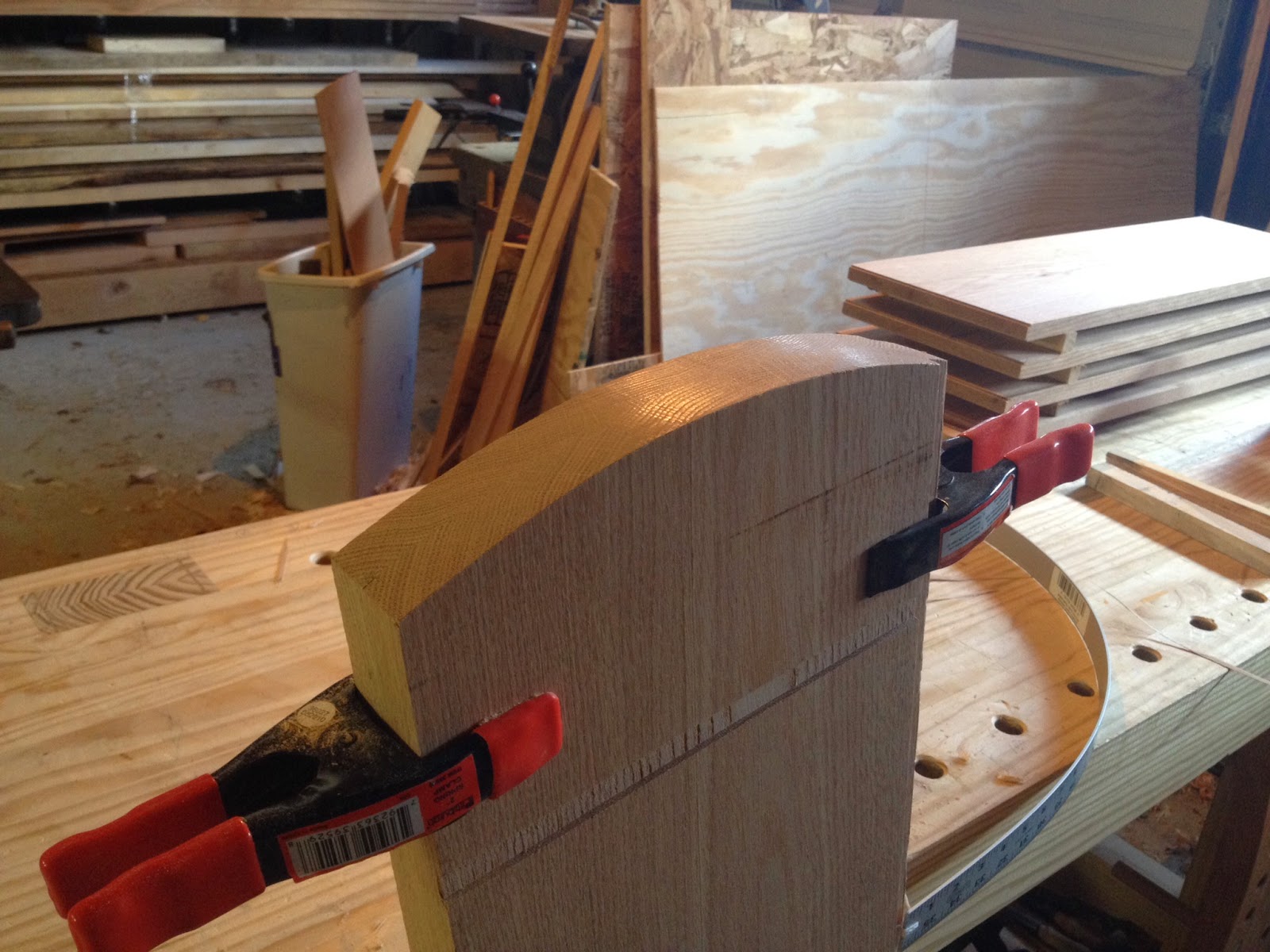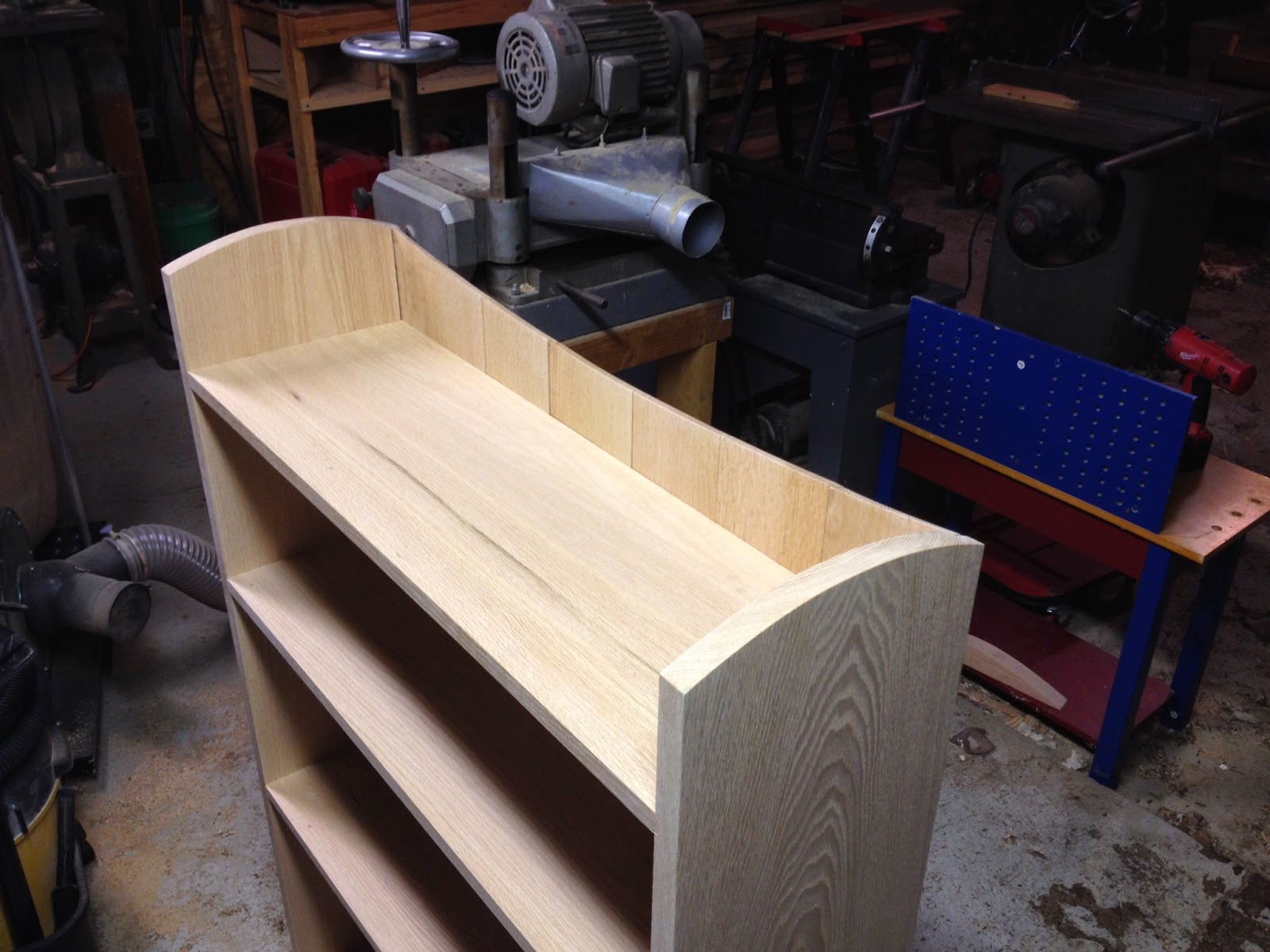I've been working on a bed for my wife and I for a few months now (more to come in a future post) but recently took a break to make up a few end grain cutting boards for Christmas gifts. Wooden cutting boards are easy on your knives (especially the end grain variety), nice to look at, simple to make, and a great use for smaller scraps of wood. These facts make cutting boards one of the most common gifts a woodworker can make but somehow I missed that bandwagon until this year. For this project I largely followed the lead of Marc Spagnuolo "The Wood Whisperer" based on his post and video here.
I had plenty of 4/4 walnut and cherry scraps laying around the shop but I figured the cutting boards would look funny without some thicker stock to make up the bulk of the pattern so I picked up one large 8/4 hard maple board from Kettle Moraine Hardwoods in Hartford. I ripped the maple into pieces about 2"x2"x12" and the cherry and walnut into 1"x2"x12". These pieces were then glued up as shown below.
The next day I trimmed up the ends and ran the assembly through the planer to bring it down to an even thickness. Unfortunately (at least for this project) the maple board had some curly grain and the planer left some pretty deep tear-out.
In order to cleanup the tear-out I switched over to a low angle jack plane with a toothed blade to take off enough material to get down past the tore out areas.
With the bulk of the material removed I switched to a smooth plane with a high angle blade to take off the peaks and valleys left by the toothed blade. The resulting surface was baby-butt smooth and the figured maple was almost too pretty to bury inside of a cutting board.
After ogling the figured maple for a bit I got back to work and setup the miter gauge to crosscut this assembly into strips once again... this may seem counter productive but we want the surface of the cutting board to be end grain so we are only half way there.
Here is what it looks like with the resulting strips laid end grain up with every other strip flipped end-for-end.
Now we just need to glue the strips back together in this configuration. Since the end grain is much tougher to plane and/or sand down it is important to get all of the glue joints as level as possible during the glue-up.
After letting the glue set overnight I took on the challenge of flattening the end grain surfaces of the board. In order to prevent any blowouts along the edges I planed a slight chamfer around the perimeter of the board on both faces.
Leveling the end grain surfaces is the most difficult part of this whole process. Because end grain is so tough the common advice is to avoid running it through the power planer based on the risk of it tearing the board completely apart. The other common recommendations are to run the cutting board through a drum sander (I don't have one) or sand it down with a belt sander (I don't want one). I figured this was a perfect task for the low angle jack plane with a 25 degree blade (37 degree effective cutting angle). Overall this worked very well but it was hard work and despite the fact that it was just above freezing in the shop I worked up a decent sweat by the time I was done with both sides of a board. Even with modern tool steel (A2 in this case) I found that I needed to re-sharpen the plane blade after each board, honestly it probably would have been good to re-hone between faces.
Next I used a trim router with a chamferring bit to knock off all the edges before final sanding. The plane did a great job leveling the board but I ended up with a few scuff marks so I took care of those with the random-orbit sander working up through 40, 80, and 120 grits. Just for kicks I did try skipping the plane and starting with 40 grit on the next board and it was clear that the plane/sander combo was much faster.
At this point the only step left is applying some type of finish. There is a ton of debate and misinformation surrounding the topic of food-safe finishes and many people choose to use some combination of mineral oil and/or beeswax. These finishes are non-toxic and look nice at first but require re-application periodically (monthly in some cases) and I was hoping to avoid that. There are also finishes sold as "salad bowl finish" that are accepted as food safe which are nothing more than thinned wipe-on polyurethane. Poly, like nearly all finishes, is non-toxic once cured. Continuing to follow in the footsteps of the Wood Whisperer example I applied 3 coats of poly thinned about 75% with mineral spirits as detailed here,
I ended up making 3 cutting boards this year, one of which will likely become the go-to board in our kitchen so I am looking forward to seeing how this finish, and the board in general, stands up over time.
With this side project wrapped up its time to get back to working on the bed...





























































